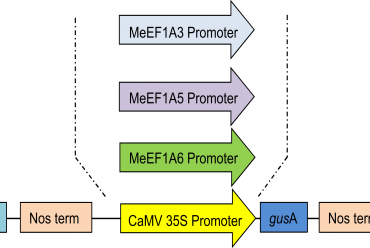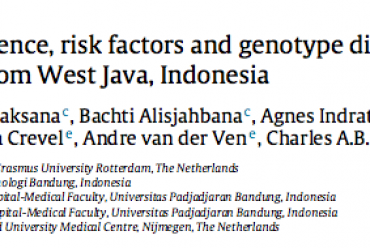Agrobacterium-mediated stable transformation of medicinal plant Andrographis paniculata callus expressing β-glucuronidase (GUS) gene
Marwani, E., Tangapo, A., Dwivany, F.M.
Abstract
This study was carried out to establish a stable genetic transformation in callus culture of Andrographis paniculata mediated by Agrobacterium tumefaciens. The leaf disks of A. paniculata were infected with A. tumefaciens LBA4404 carrying a binary vector pCAMBIA1304 that contain β-glucuronidase (GUS) and hygromycin phosphotransferase (hpt) genes. The infection was conducted by dipping method for one hour, followed by co-cultivation in the dark for three days. To examine transient GUS expression, the co-cultivated leaf disks were assayed for β-glucuronidase activity and to obtain stable transformed callus, the co-cultivated leaf disks were selected on the callus induction medium which contain 20 mg/l hygromycin for selection. The transformed callus was periodically subcultured every three weeks into the fresh selection medium over the 15 weeks period. To test a stable transformation, the callus was subjected to PCR analysis for GUS gene detection. The results indicated that the co-cultivated leaf disks expressed GUS activity and proliferated to produce callus on the selective medium. Analysis of PCR on the transformed callus indicated the presence 976 bp fragment that confi rmed the presence of β-glucuronidase gene. These fi ndings imply that the β-glucuronidase was stably integrated into A. paniculata callus culture.


![[:en] Introduction[:id]Pengantar[:]](https://gbm.sith.itb.ac.id/wp-content/uploads/sites/180/2017/02/Pengantar-1-370x248.jpg)

